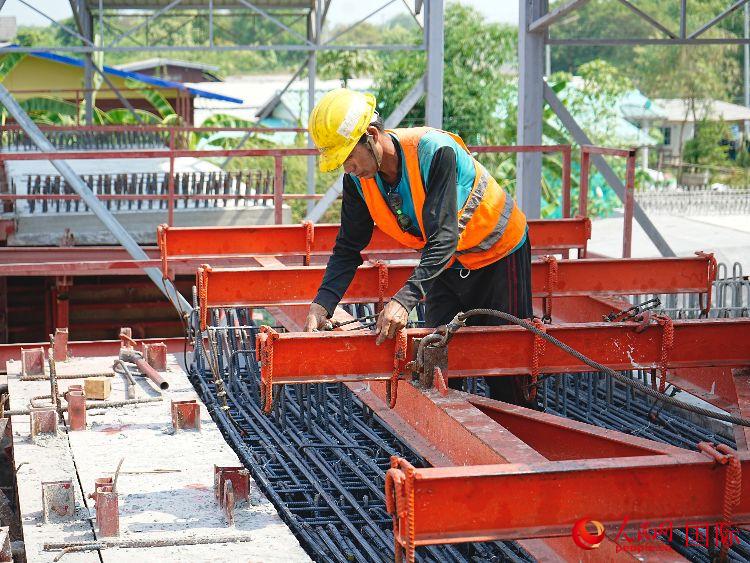beijingwalker
ELITE MEMBER

- Joined
- Nov 4, 2011
- Messages
- 65,195
- Reaction score
- -55
- Country
- Location
China-Thailand railway under smooth construction
by Kathmandu Tribune StaffJune 2, 2023
The construction of the China-Thailand railway, a landmark project representing the high-quality construction of the Belt and Road Initiative (BRI), is currently under full swing.
Crossing the most densely populated areas in Thailand, the railway will inject new impetus into the development of the country’s economy and transportation.
Upon completion, the railway is expected to boost economic development along its route. It will be connected to the China-Laos railway, forming a railroad artery that crosses the Indochina Peninsula and accelerating infrastructure connectivity in the region.
Pak Chong district in northeast Thailand’s Nakhon Ratchasima province is an important gateway connecting central Thailand and the country’s northeastern provinces. The Nakhon Ratchasima province is the terminal of the first phase project of the China-Thailand railway. Currently, the construction of the first phase project is in full swing.

At the construction site of the project, piers of viaducts are being erected along the direction of an existing track. To ensure the quality of the construction, Viloth, deputy head of a construction supervising team of the project, takes a boom lift every week to dozens of meters high to inspect the top of the piers.
“The Chinese teams have brought advanced philosophies, modern technologies and management experiences to Thailand’s railway construction. The building of the railway not only better connects Thailand and China, but also brings the two peoples closer,” said Viloth.
The China-Thailand railway promotes the idea of green transport and has applied green and low-carbon technologies during its construction. It will be built into a green railway that features technological innovation and ecology-friendly development.
Apart from Nakhon Ratchasima province, the construction of the China-Thailand railway has also commenced in Phra Nakhon Si Ayutthaya, Saraburi and other provinces along the route.
The section 4-3 in Phra Nakhon Si Ayutthaya province is the largest one of the project. So far, 1,912 foundation piles have been driven, 106 bearing platforms built and 17 piers erected. Prefabricated beams are neatly placed at the site and will be used for the viaduct construction.
“We completed a blueprint for the civil works of the first phase project in June 2019. The civil works currently underway include bridges, roadbeds, tunnels, and station buildings,” said Ma Shengshuang, head of the Thai branch of China Railway Design Corporation.
The first phase project connects Bangkok and Nakhon Ratchasima province, and the second phase will extend the track to Nong Khai province, an important town for border trade in northeast Thailand that faces Lao capital Vientiane just across a river. The second phase is expected to connect the railway with the China-Laos railway.
The Krung Thep Aphiwat Central Terminal in Bangkok will be made into a transfer station for the China-Laos-Thailand high-speed railway and the Thailand-Malaysia-Singapore high-speed railway.
According to Nirut Maneephan, governor of the State Railway of Thailand, 16.72 percent of the China-Thailand railway’s first phase project construction had been completed as of mid-January this year, and the railway is expected to be put into operation in 2027.
The second phase of the project is expected to start in 2024, and aims to open in 2028, he said.

Recently, a delegation of Thai railway and customs officials visited Laos to discuss cooperation. The China-Laos-Thailand railway is likely to cut the cost of cargo transport by 30 to 50 percent in the next three to five years.
Thailand has stepped up its efforts in the past year to integrate itself into the China-Laos-Thailand railway, including upgrading its domestic transport network and railway facilities, and improving the capacity of cargo warehousing, distribution and inspection in its northeast region.
It is believed that the China-Laos-Thailand railway will significantly promote sub-regional development and bring the Indochina Peninsula into an era of high-speed railways.
Nirut noted that the high-speed railway network will not only connect regions in Thailand, but also form a railway system of the ASEAN. When all high-speed railway projects are connected as a whole, they will become a gigantic railway network for passengers and cargo that links China, Malaysia, Singapore, Laos and Thailand.
Surasit Thanadtang, director of the Thai-Chinese Strategic Research Center under the National Research Council of Thailand, said the railway network is expected to strengthen connectivity among Southeast Asian countries and help them gain more market opportunities.
The alignment between the Master Plan on ASEAN Connectivity 2025 and the BRI will further strengthen connectivity, lower logistics costs, and promote personnel exchanges, thus creating more opportunities for countries along the Belt and Road and promoting regional integration.








